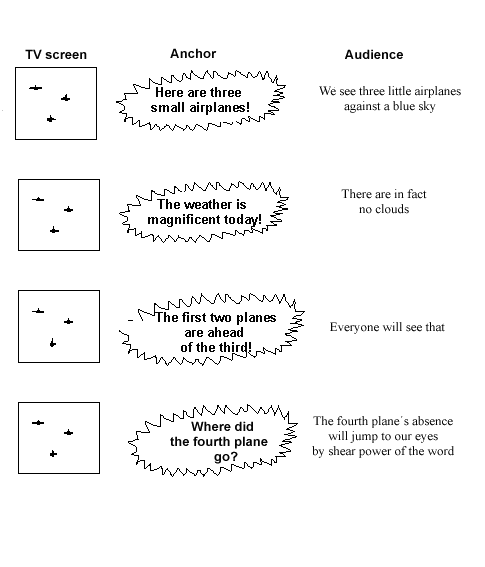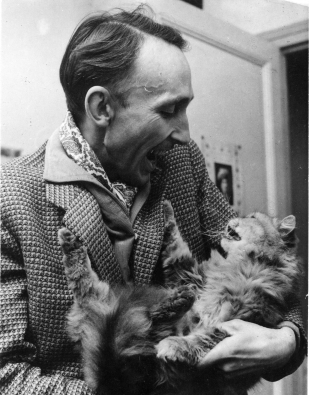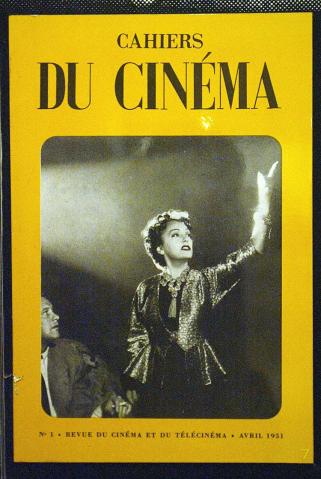Syllabus review
Short In-class Writing Exercise
- What’s your favorite movie?
- Of all the films listed on the Schedule section of the syllabus, which ones have you seen (if any)?
- Define “movie.” How is a movie different from a book, a stage play, or a painting? We know a movie when we see it, but the task of defining what a movie is gets much more difficult when we’re asked to put that definition into words.
Form versus Content
These images have the same “content,” but they’re very different on the level of form:


How are they different?
In this class, we’ll be devoting most of our attention to the ways that movies work on the level of form rather than just talking about their contents.
Crash Course in Film Terminology
Technique must not become an end in itself; any special technique must have some underlying purpose related to the purpose of the film as a whole. Every time a director or cinematographer employs an unusual camera angle or a new photographic technique, he or she should do so for the purposes of communicating (either sensually or intellectually) in the most effective way possible, not simply to show off or try a new trick. (The Art of Watching Films, 104)
In other words….
Before we get all deep and analytical–before we’re in a position to say what sensual or intellectual meaning a particular camera angle or cinematic technique is communicating in a given instance–we’ve got to learn what these cinematic techniques are in the first place.
Foundational terms
Shot (pages 111 and G-7): A strip of film produced by a single continuous running of the camera. After the editing and printing processes, a shot becomes the segment of film between cuts or optical transitions.
Cut (not in textbook): An instantaneous change from one shot to another.
Look of outward regard (pages 108 and G-4): A shot that shows a character looking off-screen and thereby cues us to wonder what the character is looking at.
Eye-line shot (pages 108 and G-3): A shot that shows us what a character is looking at, usually after a look of outward regard.
Eye-line match (not in textbook): The cut that links a look of outward regard to an eye-line shot (refers to the cut itself).
Example (look of outward regard + eye-line shot = eye-line match):
Editing (not in textbook): The total set of techniques for bringing shots in relation to one another, usually through cuts but sometimes through other kinds of optical transitions.
Mise-en-scene (not in textbook): All of the elements placed in front of the camera to be photographed: the settings and props, lighting, costumes, makeup, and actor behavior.
Cinematography (not in textbook): The opposite of mise-en-scene, cinematography refers to all artistic decisions pertaining to the camera itself rather than to what’s in front of the camera, such as camera movement, shot scale and framing, shot angle, and lens type.
Types of camera movement
Panning (pages 116 and G-6): Moving the camera’s line of sight in a horizontal plane to the right and left or vice versa.
Tilting (pages 117 and G-8): Moving the camera’s line of sight in a vertical plane, up and down.
Tracking (not in textbook, but see stuff about “The Mobile Camera” on page 119):A mobile framing where the camera travels through space forward, backward, or laterally. *The textbook calls this a “following shot,” but the proper term that most filmmakers and film critics actually use is tracking or tracking shot.
Putting it all together (tracking and panning combined at various points):
Types of shot scale and framing
Long shot (pages 120 and G-4): A shot taken from some distance that usually shows the subject as well as its surroundings. (The “furthest away” type of shot; the scale of the object(s) shown is very small.)

Plan américain, American shot, or Medium-long shot (not in textbook): A framing in which the scale of the object shown is moderately small. The human figure appears approximately from the shins or knees up.

Medium shot (not in textbook): A framing in which the scale of the object(s) shown is of moderate size. The human figure appears approximately from the waist up.

Medium close-up (not in textbook): A framing in which the scale of the object(s) shown is fairly large. The human figure appears approximately from the chest up.

Close-up (pages 113 and G-1): A close shot of a person or object; a close-up of a person generally focuses on the face only.

Extreme close-up (not in textbook): A framing in which the scale of the object shown is very large; most commonly, all that is shown is a small object or merely a part of the face or body.

Bringing it all together:
























